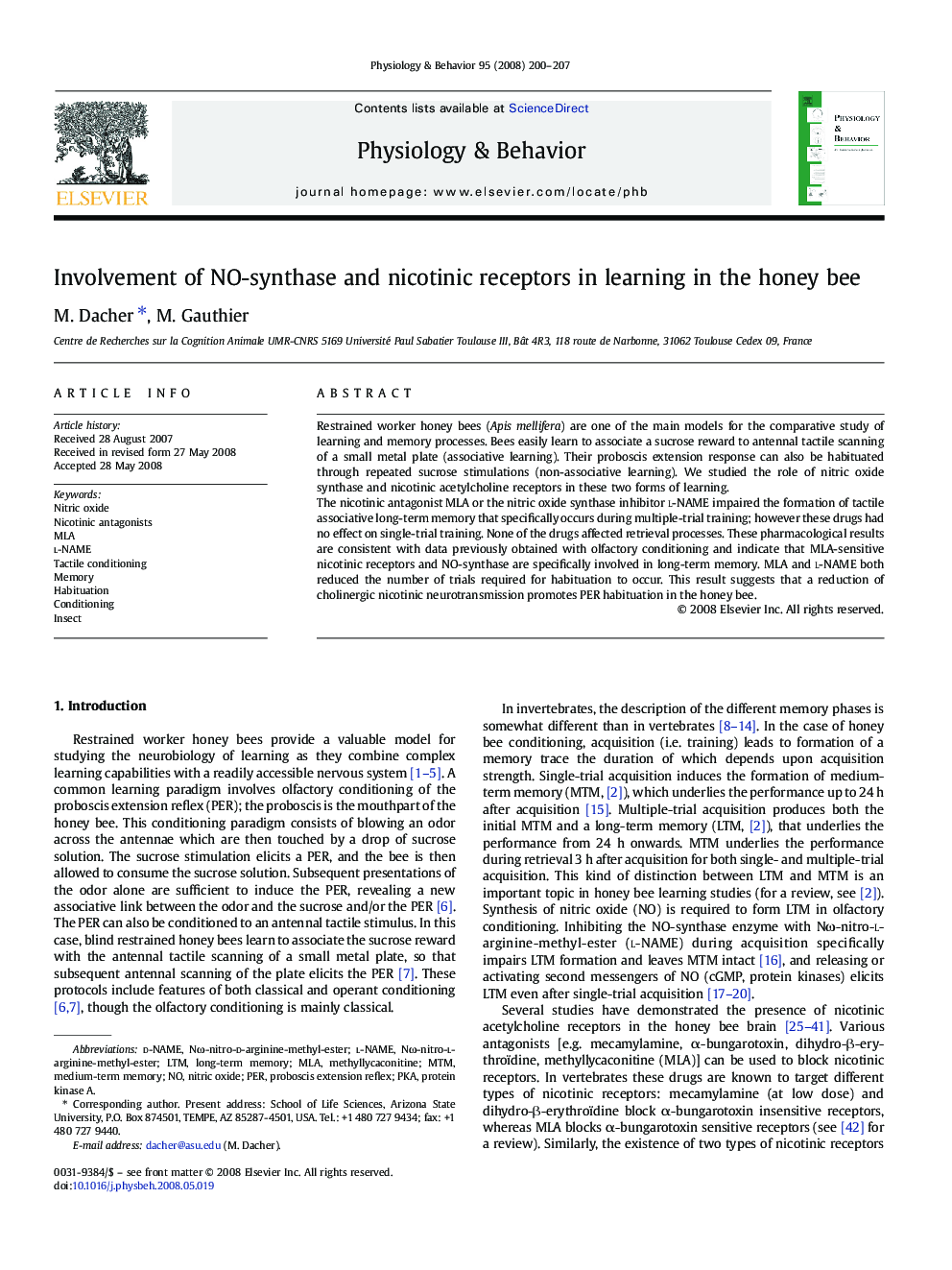| Article ID | Journal | Published Year | Pages | File Type |
|---|---|---|---|---|
| 2845394 | Physiology & Behavior | 2008 | 8 Pages |
Restrained worker honey bees (Apis mellifera) are one of the main models for the comparative study of learning and memory processes. Bees easily learn to associate a sucrose reward to antennal tactile scanning of a small metal plate (associative learning). Their proboscis extension response can also be habituated through repeated sucrose stimulations (non-associative learning). We studied the role of nitric oxide synthase and nicotinic acetylcholine receptors in these two forms of learning.The nicotinic antagonist MLA or the nitric oxide synthase inhibitor l-NAME impaired the formation of tactile associative long-term memory that specifically occurs during multiple-trial training; however these drugs had no effect on single-trial training. None of the drugs affected retrieval processes. These pharmacological results are consistent with data previously obtained with olfactory conditioning and indicate that MLA-sensitive nicotinic receptors and NO-synthase are specifically involved in long-term memory. MLA and l-NAME both reduced the number of trials required for habituation to occur. This result suggests that a reduction of cholinergic nicotinic neurotransmission promotes PER habituation in the honey bee.
